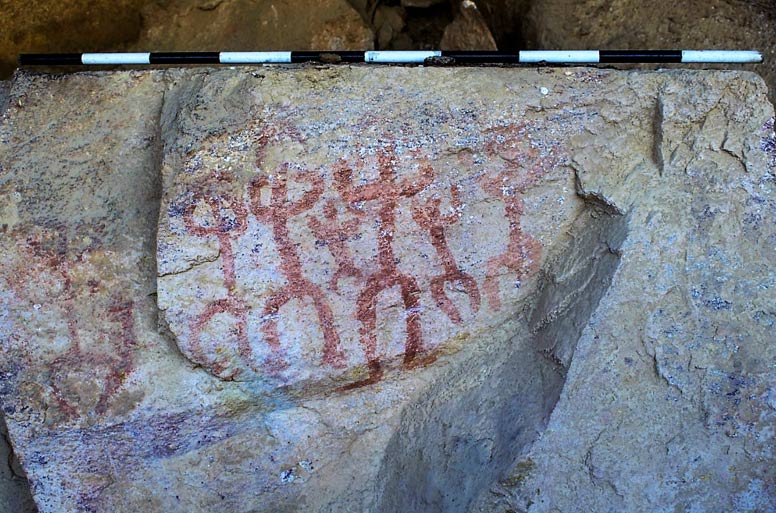Art Before the Pharaohs: 10,000 BC Paintings Found in Egypt
A newly discovered cave in Sinai, Egypt, is the first of its kind in the region to be found decorated from floor to ceiling with colorful ancient paintings – and it was all by chance. It is estimated that some of the images could be 12,000 years old. The find is providing insights into the prehistoric past of the region.
The inscriptions were found by a person who was exploring some caves in the deserts of South Sinai and who notified the relevant authorities.
Egypt Today states that the site is “about 40 miles southeast of Sarabit El Khadem and about 30 kilometers north of St. Catherine.” The Ministry of Tourism and Antiquities sent a team to document the discoveries.
The inscriptions were found, according to Mostafa al-Waziri, Secretary-General of the Supreme Council of Antiquities, in a cavern “located in a difficult region called al-Zaranij” reports Egypt Independent.
They were found in a large sandstone rock shelter that is 10 feet (3 meters) high and 20 feet (6 meters) wide. It appears that the cave was at one time used by nomadic Bedouin as shelter.

A large number of images were found in the cave. Some of them were engraved onto the roof of the cave. Others were found on blocks of stone that had fallen onto the floor of the cavern.
Hisham Hussein, head of the archaeological mission, is quoted by Egypt Today as saying that the “discovered inscriptions depict many different scenes dating back to different eras”.
The inscriptions and images were inscribed onto the rock and then painted. They are all a dark reddish color but many have faded and are quite hard to make out. The experts have divided the rock art into three broad categories based on the images that they represent and their styles.

The first type of rock art is the oldest and date back some 7,000 to 12,000 years ago and was made thousands of years before the pyramids were built.
They are primarily found on the ceiling of the cavern. These are “mainly of animals such as donkeys and mules” reports Egypt Today. These are drawn in a realistic way and they are in proportion.

Their handprints also to be found all over the cave from the same era. Somewhat similar handprints have also been found in the Western Desert of Egypt.
However, Newsweek quotes Professor John Darnell of Yale University, “the hands from the Sinai site appear to be of a different style, and possibly later in date” than these examples.

The second category of rock art probably comes from the Chalcolithic or Copper Age 3,500 to 2,300 BC. These are mostly stick-like red images of females and animals.
Professor Darnell told Newsweek, the “red-painted imagery is not as commonly found as incised images and text”. They were not made in a naturalistic way and the proportions of their bodies are not in harmony.
The third type of rock carvings is different from the previous two. They show people on a howdah. This is a type of bed or carriage that is carried by a camel and was used to transport members of the elite in the Middle East, until relatively recently. These images probably are no older than the first millennium BC.
Egypt has a long history of rock art. Professor Darnell stated that they often reveal the “complex tradition of human interactions with the landscape” according to Newsweek.
The different types of images and inscriptions can help researchers to better understand the history of the Sinai.

